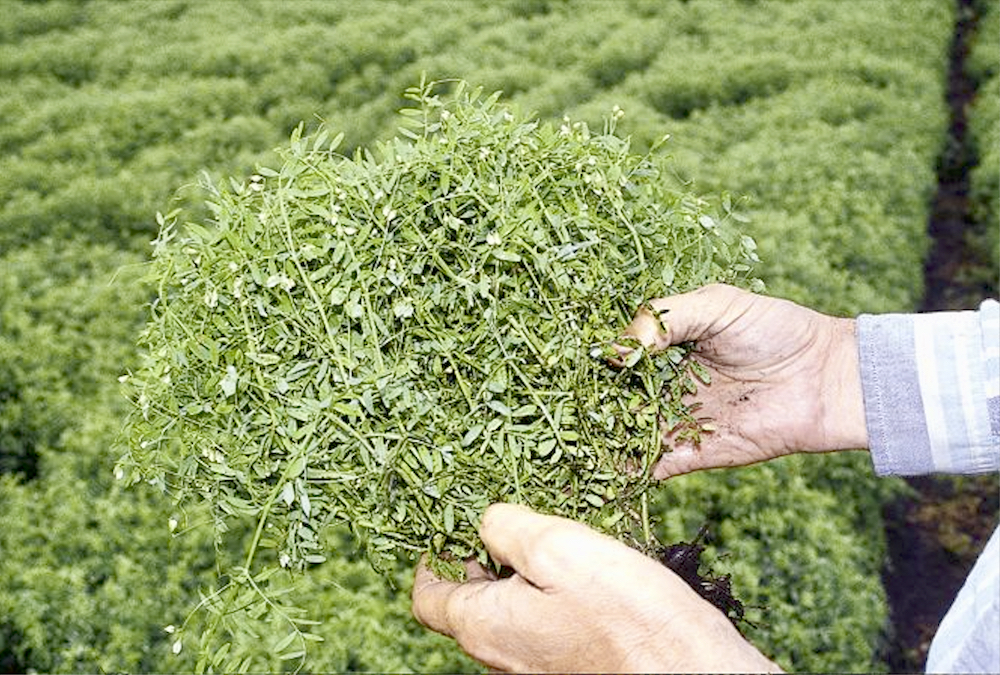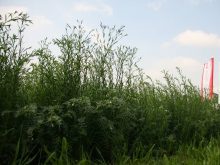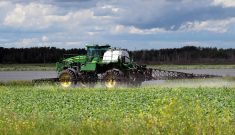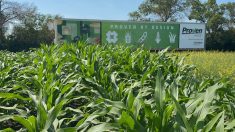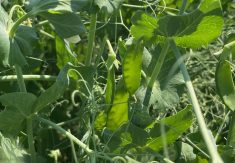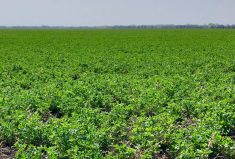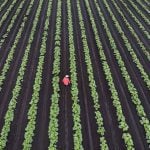Q: What can I do to control anthracnose in my lentil crops?
A: The anthracnose pathogen in lentils has been a problem for producers in southern Saskatchewan and other lentil-producing areas. Even with the dry growing conditions in regions of southern Saskatchewan, the disease seems to appear after only minimal rainfall.
Anthracnose is a fungal disease caused by the pathogen, Colletotrichum lentis. The foliar disease can affect all plant parts, resulting in premature leaf drop, yield loss and plant death. The symptoms usually start at the 10-12 node stage or early flower and first appear on lower leaflets and stems. The disease appears as sunken-in grey- to cream-colored lesions with pin-shaped black microsclerotia present on stem lesions. The lesions progress up the plant canopy infecting large areas of the crop. When infection is severe, stem girdling will restrict nutrient and moisture movement up the stem, causing plant death. Anthracnose is a polycyclic disease, meaning it can have multiple life cycles in one year, which makes it hard to control and allows the disease to spread quickly in the field.
Read Also
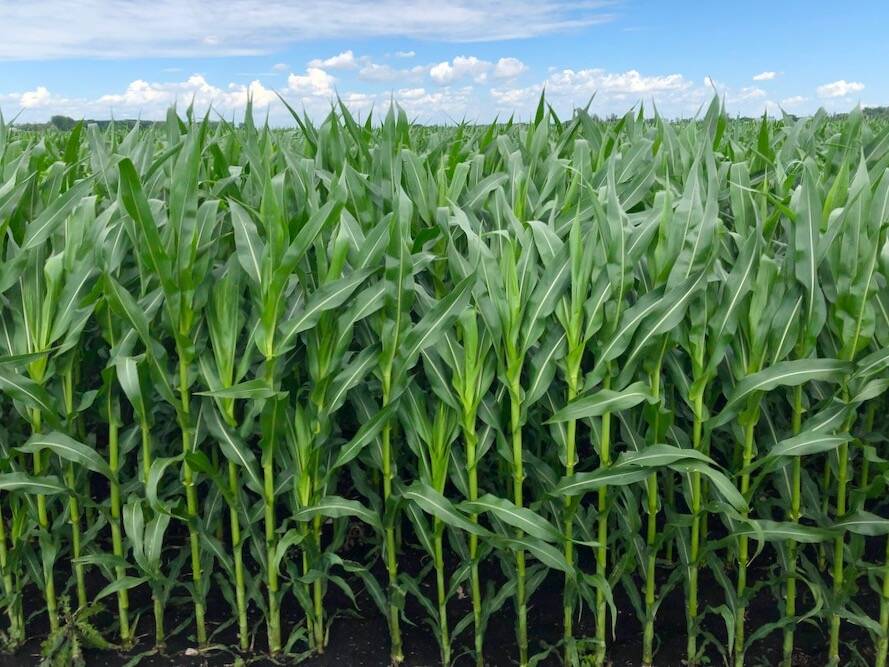
Cancer agency reclassifies another herbicide ‘probably carcinogenic’
The WHO’s cancer research agency has now put atrazine, a herbicide well known to corn growers, in the same potential-hazard category where the agency put glyphosate.
While anthracnose has been a problem, there are actions you can take to help prevent it. The anthracnose pathogen will overwinter in fields as microsclerotia on infected crop residue. From there it will reinfect the crop mainly through rain splash or wind. Therefore, having a strong crop rotation that gives at least three years in between lentil crops is one of the best methods to combat anthracnose. Rotating out of pulses into non-host crops such as cereals and oilseeds is the preferred option to reduce the inoculum present in the field.
Additionally, scouting and monitoring fields are important practices producers should implement to prevent the infection and spread of anthracnose. The anthracnose pathogen, like other foliar diseases, favours wet and humid conditions. Producers need to take note of long-range weather forecasts as well as the crop’s microclimate conditions.
If the crop is staying wet in the canopy and there is rain and high humidity in the forecast, the risk of anthracnose is high and a fungicide application may be necessary.
Producers can turn to fungicides to help prevent and control the spread of anthracnose in their fields. This is a great option, but farmers need to be aware of the resistance risk anthracnose poses to some fungicide groups. Research and surveys done in many lentil-producing areas, especially southern Saskatchewan, have shown anthracnose resistance to Group 11 strobilurin fungicides.
When choosing fungicides, producers must select products with multiple modes of action. Using only Group 11 products may not work to control the disease and can lead to further resistance development. Using combination products that have Group 11 combined with a Group 3 or Group 7 mode of action will provide much better control and mitigate the risk of resistance development.
– Lane Blanke, B.Sc., PAg, CCA, is a manager of agronomic services for Nutrien Ag Solutions in Swift Current, Sask.

